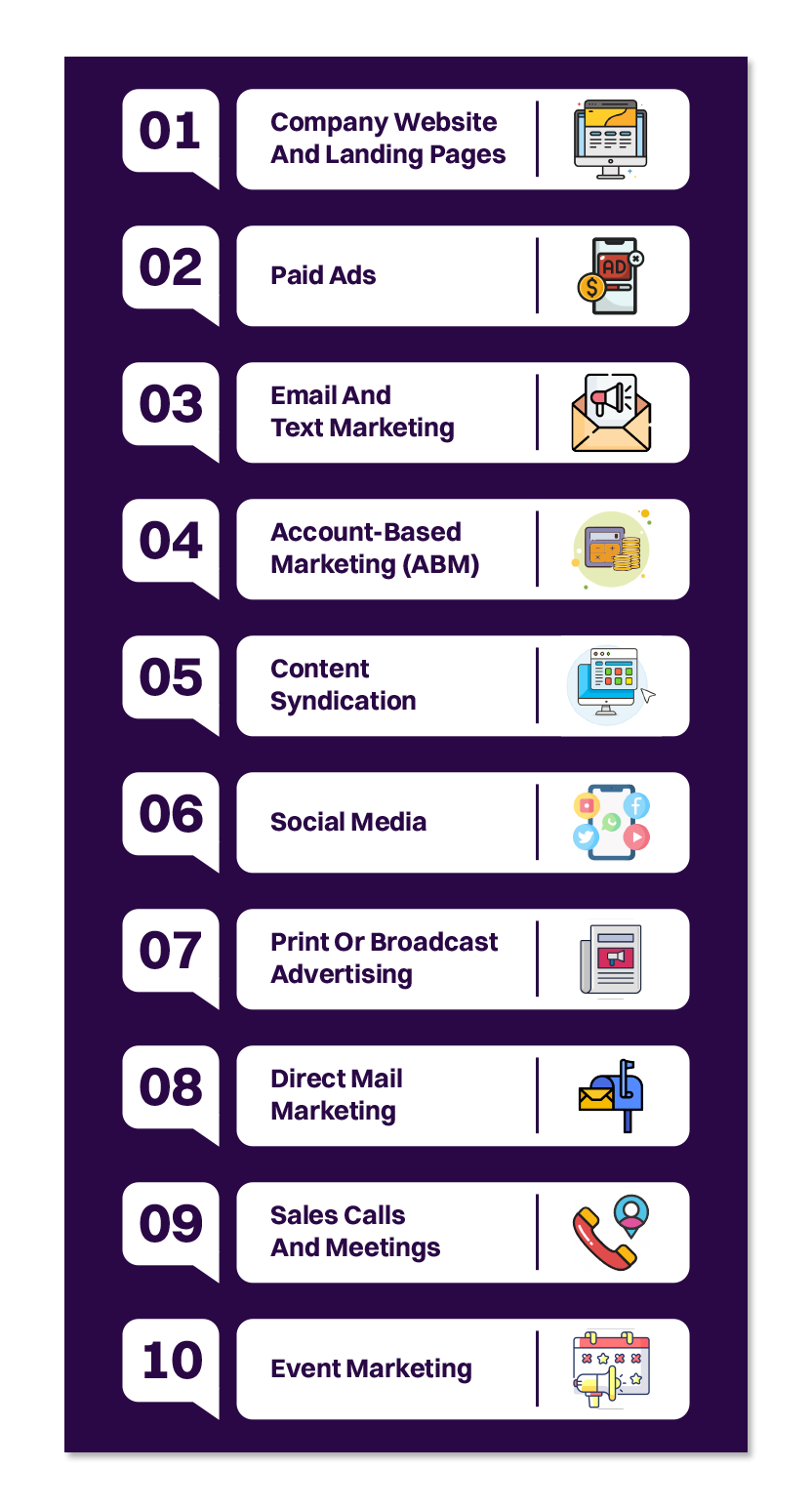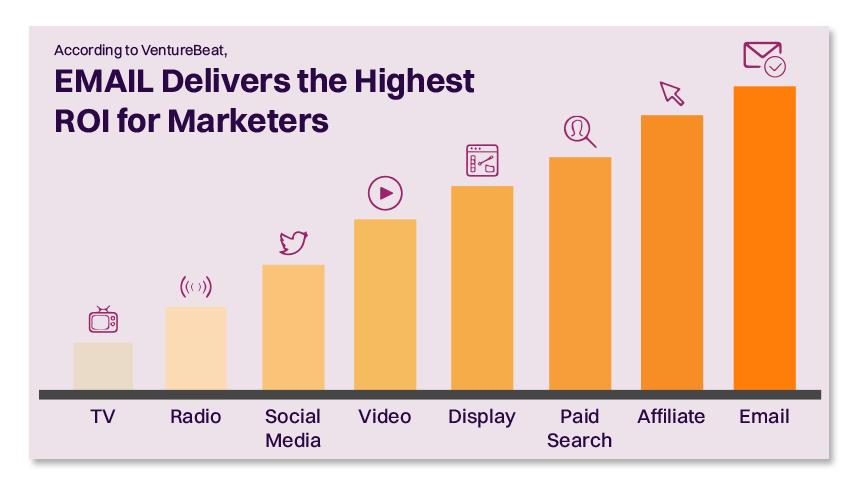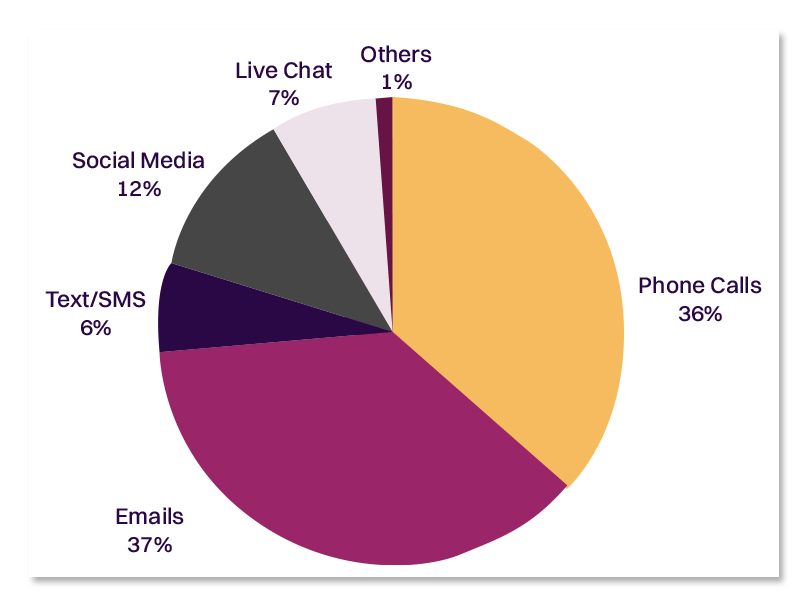
B2B Lead Generation: What Are the Biggest Problems and How Can You Avoid Them
Who are you?
That’s a weird question, right? And it’s a tough one to answer. It’s not asked in the hope you’ll delve into your inner psyche to really confront what motivates you, and what made you who you are.No, it’s much less dramatic than that. Who are you?
You’re reading an article about the problems with B2B sales lead generation. You should congratulate yourself. That probably means you’re in a position to make decisions about how your company allocates its sales development budget. The decisions you take will have a direct impact on the business’s performance in the short, medium, and long term. Even if it’s not your firm, that’s a hell of a responsibility on your shoulders.
And so on to lead generation. It doesn’t seem like such a life-and-death field of exploration compared to the long-term future of your company, and it isn’t. Not directly.
But you know it is essential. It does make a massive difference to the effectiveness of your sales teams. And that, of course, has a direct impact on your balance sheet, which has a direct impact on the short, medium, and long-term performance of your company.
Let’s talk about the problems with lead generation - and how your time and money could be better spent.
We’ll look at:
- What lead generation looks like now
- The problems with lead generation now
- Can the problems be solved?
- Alternatives to the current models (and their pros and cons)
What Does Lead Generation Look Like Today?
How long have you got?
As the below image shows, there are multiple ways to find the prospects you need to reach.

Let’s take a look at some of these elements, as well as some more specific B2B lead generation channels.
1. Company Website and Landing Pages
This is almost self-explanatory. Except, of course, you may not yet know the name of the company that’s perfect for you. Luckily, you have search engines that will take you straight to that company’s page and to all its competitors’ pages. They’ll all be perfect for your product.
2. Paid Ads
This is as well as being a great way to market to your potential clients, ads are a great way for a salesperson to generate leads. If a competitor organization is advertising in specific publications or websites, there’s a good chance that these places have a highly relevant audience for your own offering.
3. Email and Text Marketing
Whilst text marketing remains largely the preserve of B2C marketers, email is often where modern B2B salespeople do their most important work. For context, the average success rate for a cold call is 2%.

4. Account-Based Marketing (ABM)
Doing business with the wrong people can be expensive. Spending time chasing the wrong leads is demoralizing, counterproductive, and an enormous waste of resources. ABM is an approach that sees sales and marketing functions operating in complete lockstep. ABM allows you to nurture relationships with high-value prospects by running bespoke, personalized campaigns to the people who’ll make a real difference to your sales.
5. Content Syndication
Everyone knows that, in a world dominated by capricious search engine algorithms, it’s important for any business to regularly produce credible, industry-relevant, optimized content to drive search traffic to their work. And you’ve done this. There are fifty blogs and videos on your site, covering every aspect of what’s relevant to your target markets. Nothing. No discernable increase in visitors to the site, let alone sales.
You know your content is on-point, offers genuine value to its reader, and demonstrates your company’s expertise. But still, nothing.
You know, through your marketing efforts and extensive monitoring of social media, that the key people in your field are talking about the very problem your content is offering a solution to. If only you could get your content in front of those eyes, in the places they frequent. Imagine the impact on your ROI!
You just imagined content syndication. It works.
6. Social Media
One of the most difficult aspects of a salesperson’s job is knowing exactly what a prospect needs or wants. You know your product or service is great, and you see no reason why their view shouldn’t align with yours. But there’s something you’re not sure about, they’re not giving much away.
If only you could get access to the place, the prospect lets their hair down, drops the executive persona, and tells people what they really think. Well, you do, and that place is social media.
Even on a platform geared toward the professional world, like LinkedIn, people - prospects - share so much with their networks: what frustrates them, the businesses and products they love, treasured former colleagues and industries, even family personal and family updates.
And the best thing? That element is just one of a multitude of elements that makes LinkedIn an essential part of any lead generation armory.
This is a single resource that tells you not only where each user works, but it also gives you their role, their length of service, previous companies, and an exhaustive list of their professional connections?! The lead generator of the last century would think this is some kind of blessed afterlife. And yet, there it is right now, just waiting for you.
If you’re not using LinkedIn marketing to its maximum potential for B2B lead generation, you’re leaving money on the table.
7. Print or Broadcast Advertising
This is still a great way to generate leads. You’re exposed to mass audiences - if you can nail the creative side of your ad so you’re offering a clear, simple, compelling message, there’s no reason the leads won’t be banging down your door.
If resources - in both time and in money - aren’t a problem for you, this is a solid option for you to drive engagement with your brand.
8. Direct Mail Marketing
Some of the offline options will naturally feel kind of ‘old school’ compared with their online equivalents. But the world still turned before we were all online, and some of the tactics that worked for businesses in the past are still working today. A direct letter through the front door can still have a powerful impact on a prospect, although much less so in the B2B world in the 21st Century.
9. Sales Calls and Meetings
This is the reason you do lead generation in the first place, right? The meeting is where you and your sales team do what you do best - seal the deal. As you build relationships with your new and potential clients, you can also leverage the rapport you’ve established together. If they recognize the value of what you’re offering, why wouldn’t their competitor be situated a couple of streets away, and think the same thing?
10. Event Marketing
If you serve an industry, and the leading figures in that industry have advertised that they’re going to be in the same place, on the same days, in a city that’s accessible to you, why wouldn’t you make sure that you and/or key members of your team are there too? We’re talking about a room (or rooms) absolutely packed full of pre-qualified leads. And they’re there to talk business. There are few better ways to get in front of the people who (you think) need to see you.
The nature of modern sales and marketing means the decline in the use of older offline methods of lead generation is inevitable - although old-fashioned cold calling will be with us for some time yet, as we see here.

OK, so we can see how the world of lead generation looks today. But you were promised a discourse on the problems with lead generation, and a discourse on the problems with lead generation you should have!
What Are the Problems with Lead Generation Today?
There are no problems with the number of ways you can reach out to potential clients. The prospects are out there, the technology exists to find them, and there is endless information out there to help you refine your searches. This is an optimal position for you to be in. You’re very close, indeed.
So then, the problems. There are multiple problems with lead generation, and they all fall under one (or both) of the following:

1. Time
As we know, the ability to generate leads at your fingertips has increased by massive dimensions in recent years. Given how abundant and accessible information now is to salespeople, surely their problems with this aspect of the sales process have been solved?
Not quite. It is estimated that salespeople should spend 30%-40% of their working week generating leads. This means salespeople spend 30%-40% of their time in any given week not selling.
Even if they have sourced their leads impeccably, and even if they only took 20% of their working week to do so, there’s a sizable chance that 85%-90% of their outreach will be unsuccessful as a matter of course. If that much time is wasted when they are selling, can you really afford for your team to be spending 40% of their week on admin tasks where they couldn’t possibly sell?
That’s a lot of time for your people to be off the field when the game is being played. And what are salespeople when they’re not actively pursuing and closing sales? They’re salaries, and that money isn’t coming back to your business. This brings us to…
2. Money
Ah, yes, the thorny issue of the bill. We have established that the leads are out there. We just need to go get them. But it’s not quite as easy as that (or as easy as it used to be).
For quality information or for premium space in a newspaper or next to a highway, you won’t be paying peanuts. Data is an industry, as is prime advertising real estate. The rewards for controlling them are great. That reward comes from you; the more you want, the more you’ll pay. Whether that’s $99.99 per license per month for LinkedIn Sales Navigator or $20m for a billboard in Times Square on New Year’s Eve. It’s all outgoing money.
That might be acceptable to you if you know precisely the ‘how’, the ‘who’, the ‘where’, and the ‘when’ for targeting clients. Planning, strategy and single-mindedness could reduce some of your lead generation costs. But you can’t eliminate them.
And what if you need more information before you commit to a strategy? What if you need to experiment before you know which methods fit you best? The good news is this can be super-effective. Experimenting is good and to be encouraged. It is one of the keys to knowing what will work for your company, and you might just learn something valuable you weren’t expecting. All you need is discipline, clear-eyed analytics and deep, deep pockets.
Are There Solutions to These Problems?
Are there solutions? Of course! Are they free and instantaneous? Let’s see.
1. Buy Leads from a Third-party
Pros: you’ve solved the problem of wasted salesperson time. Your team can spend 100% of their time doing what they (hopefully) do best: selling.
Cons: with an average cost of $198.00 per lead, this could turn out to be a costly affair. To add, particularly at the point of your first purchase, you will have no real insight into the quality of the leads you’re buying. You can view a demo or listen to a pitch by the data company, but you have no real way of knowing how good the leads really are. That’s a big risk.
Does it save time? Done right, it should!
Does it save money? Unless you’re already spending gargantuan amounts, no.
2. Recruit a New Team Member to Focus Solely on Lead Generation
Pros: again, you’re freeing your sales team to just sell, sell, sell!
Cons: An extra person in the team means an extra salary, and in a position that doesn’t ‘wash its own face’ by closing deals, and therefore driving revenue. A tough one to get past the people above you who approve your budget.
You’re also coming up against another challenge here (one that falls under both the time and money categories) - lead quality. It takes time to know which leads are right for which projects. On many levels, it’s an instinct developed over time by repetition and experience.
Your new lead generator is a member of the team, they can be coached and influenced to eventually be capable of producing the right standard of leads. The opportunity cost while they’re learning the ropes here is what will make a difference to the bottom line.
Does it save time? Eventually.
Does it save money? It depends. You’re absorbing an extra salary, but also potentially freeing your salespeople to work more productively. You just need to make sure you hire the right person!
3. Outsource Lead Generation to an Expert Third-party
Pros: take advantage of an agency’s years of experience to take the problem off your desk. If you choose an agency with a demonstrable record of success in the industry you’re targeting, they should have the knowledge and expertise to hit the ground running and can be much more cost-effective than taking on more staff.
If you choose a good agency, the right agency, the rewards can be astonishing.
An expert agency like Revnew will engage with you to understand your business; it will bring crucial industry and strategic experience; it will take time to understand who you are as a company, your culture, and your goals; a good agency will take your problems away by building a solution aligned with your own needs, and it will build a solution that works for you.
Cons: We’ve just looked at a good agency. If you choose a bad one, the best-case scenario is that nothing changes. The worst? Everything changes. And not in the way you hoped.
This option will need you to dedicate time and thought to choosing the right, reputable agency. It’s not just a case of assessing their track record, you will need to ensure that they are a good fit for your brand values and company culture.
Whilst this effort may seem somewhat daunting to a busy executive, if viewed as an opportunity to set your sales team in the right direction for years to come, this con will soon turn into a pro once the correct strategy is in place. You and your team will be liberated to concentrate on doing the very best work you can to take your business forward.
Does it save time? Yes. Maybe not at first, when you’re doing your research. But as a long-term solution to a long-term problem? Your potential will be unleashed.
Does it save money? It should, or you’re doing it wrong! Perhaps the question ought to be, will this maximize the return on my investment? Choose the right people to work with, and the answer is a resounding yes!
The Final Analysis
Lead generation has come a long way in the last thirty years. Salespeople have gone from a place where their best hope of making progress on a day-to-day basis was a combination of blind faith and a telephone on their desk, to having access to all the information the universe can throw at them in a matter of seconds.
Life certainly is easier now - but is it easy enough?
Good salespeople are difficult to find. The problem with lead generation - even now - is that it all too often requires the sidelining of your greatest assets for up to 40% of any given week.
We have seen that solutions exist. None of them are perfect, but there are ways to ensure your salespeople are giving 100% to the cause and that they’re working with the best possible raw materials. You just need to know where to look. Try it now!




